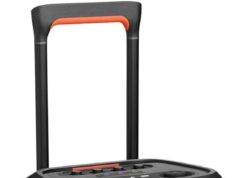
We take the search function for granted—when it goes well. If you search for a particular email, photo, or document on your PC, and it pops right up, you don’t think twice about it. But if you spend 10 minutes scouring your hard drive looking for that one file, you lose your mind. That’s where Microsoft hopes its new Recall feature can help—even if it comes with some major security risks.
What is Recall?
Recall, at its core, is simple: The feature quietly takes screenshots of what you’re doing on your PC throughout your session. Whenever you perform a search with Recall, it pulls from all these screenshots to find relevant moments in your PC activity history that might be what you’re looking for, stitching them together into a scrollable timeline. For example, if you’re looking for a slideshow you were crafting for work, searching for it may pull up the times you were working on it in PowerPoint, as well as the presentation you gave with it. The same goes for an image: If you’re looking for the photo of your dog at the park, you may see it from the time you opened it in your photos library, but also in the messaging app you used to send the photos to friends and family.
Recall associates these screenshots with the active app, as well: As you scroll through your timeline, not only can you see which window you were looking at it with, Recall will tell you which app was running and when. So if you know you want the PowerPoint session itself from February, you can skip over any screenshots from Teams.
While it’s certainly a novel feature, Microsoft wasn’t the first to launch a feature like this. Rewind offers a similar experience over on macOS, recording all your activity (including transcribing your audio) in order to make everything you do on your Mac searchable. Of course, the big difference here is Recall is a Microsoft-built feature, while Rewind is only offered by a third-party developer on macOS.
You also won’t be able to use Recall on any PC, even if its running Windows 11. Instead, this is a Copilot+ PC-exclusive, Microsoft’s new AI-powered PC standard. These machines are equipped with the Snapdragon X Plus and Snapdragon X Elite chips, which have a dedicated neural processing unit (NPU) for handling local AI processes. Unless you have one of these new machines, like the new Surface Pro or Surface Laptop, you won’t be able to try Recall when it launches.
Is Recall safe to use?
The answer, from Microsoft’s perspective, is yes. Because it only runs on Copilot+ PCs, Recall is entirely handled on-device, with no processing outsourced to the cloud. That means everything, from the AI processing to the screenshots themselves, happen on your PC. Microsoft says the screenshots used for Recall are encrypted on your PC, too, even from other profiles on the machine: If you lock your PC, your Recall screenshots are locked, too.
Plus, you have control over which apps and websites Recall takes screenshots for. If you don’t want Recall to take screenshots when you use WhatsApp, you can tell it not to. You can choose to pause Recall for periods of time as well, and delete either recently taken screenshots, or all screenshots stored on your device. InPrivate browsing sessions in Microsoft Edge, as well as DRM content, like Netflix shows and movies, will also not be recorded. (Your secrets really are safe with InPrivate browsing, I guess.)
However, while Microsoft is all about the security of Recall, it isn’t necessarily foolproof. For one, Recall takes screenshots of almost everything you do on your PC (assuming you haven’t adjusted these settings yourself). That means it won’t stop taking screenshots when you enter or access sensitive information like passwords, your social security number, or banking data: If you can see it on-screen, chances are Recall is recording it. While it’s great that these screenshots are encrypted when you lock your device, if someone does manage to break into your PC, they’ll be able to access your entire Recall history, including this sensitive information. It seems like an unforced error to let a potential hacker open Recall, search “Bank of America” or “Turbo Tax,” and watch as you from the past enters all the relevant credentials and private information in for them.
In fact, the feature is already under government scrutiny. The Information Commissioner’s Office (ICO), a U.K. data watchdog, has contacted Microsoft for more information about Recall. The watchdog says all companies must “rigorously assess and mitigate risks to peoples’ rights and freedoms” before they offer a new product for consumers. As it’s still early days (Microsoft only just announced the feature two days prior to this inquiry), it’s not clear what the watchdog will make of it, nor is it clear if other government agencies will launch their own investigations here.
For the average Windows 11 user, Recall probably isn’t going to get them into trouble, or at least put them at a substantially greater risk than they already put themselves in. Do you have a picture of your social security card in your photos library? Do you keep all your passwords in a Word doc? (Please don’t do this.) But it’s important to understand exactly what you’re agreeing to before enabling the feature. Whether it’s a hacker that wants to break into your financial accounts, or a nosy friend snooping around your PC, you are making it easy for anyone with your computer’s password to search your entire PC activity.
If you do want to try Recall, and any other Copilot+ PC-exclusive features, you can preorder one of Microsoft new Surface devices below:
Surface Laptop: Starting at $999.99
Surface Pro: Starting at $999.99








